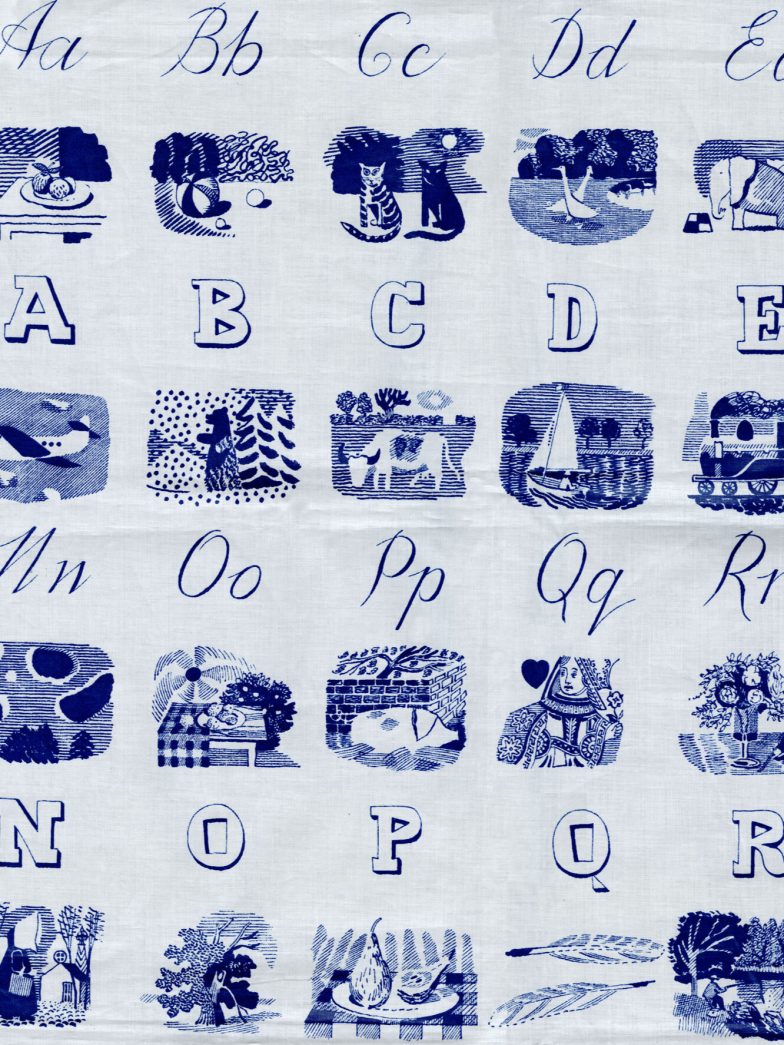Masters of Craft: In Conversation with Milli Proust

One of todays most enchanting floral stylists, Milli Proust is in her seventh year of cultivating and cropping British cut flowers. Working from her historical Sussex small holding, Milli’s organic and sustainable approach to growing blooms is inspirational. Her bouquets are always a thing of beauty and often include varieties that too rare or too fragile for UK flower markets. We’ve been a follower of Milli’s wonderful work for a while and we’re delighted she took the time to answer a few of our most pressing questions.
Hi Milli, thanks so much for talking to us…
We’d love to know a little bit more about your story, how was it you became a floral stylist? Has it always been flowers for you?
I originally trained as an actor at RADA and even though I can happily be in a theatre all day, I always yearned to be outside more. I worked in a florist shop for a bit between acting work and then my partner moved out of London 7 years ago and I followed him. The floral styling came out of growing flowers; I had started by growing vegetables and flowers now that I had space to grow- I’d always grown plants (very badly) in pots that I dragged from flat share to flat share. The flowers and veg I grew came with me on the commuter train back to the city and I sold them to a deli near my office job, I created a few designs and a friend asked me to do her wedding. Then the following year some sister’s of friends asked the same and I juggled with acting work and my office job. Eventually growing my portfolio and experience to take my business seriously enough to let it sustain me. It took a few years, but I got there and now I feel so lucky to get to do a creative job that also lets me be outdoors plenty. I still do occasional acting work, and I like to think it feeds into my floral design. It’s all about conjuring atmosphere and telling stories to mark moments of the human experience.
Your flower farm looks like heaven, can you tell us a little bit about the history of it and why your were drawn to growing cut flowers?
The cottage here is a charcoal burners dwelling made from wattle and daub. It’s been here for at least 400 years. The woods that it’s surrounded by were a hive of industry once- they were full of charcoal, brick and glass works. The plot of land would’ve been a smallholding always- used to grow vegetables, and graze pigs. It’s not the easiest spot to grow perfect flowers- very wet and dark but I’ve made it work! Some crops do better than others here. Paris and I have just taken on an acre to rent from a local farmer. The land and light is a little better up there so we’re excited to see how the crop differs. We’ll keep the crop here at the cottage for the seed crop. I wanted to grow flowers to feed into the design work. Flowers that aren’t imported, not only have a smaller carbon and chemical footprint which feels vital as the climate crisis mounts, but I think they’re more beautiful and make better ingredients too. When a plant is touched by the weather, mottled petals from the rain, a bend from the wind- there’s more innate beauty to play with.
We know this may have changed a little for you recently but what does your typical work day look like?
The work here varies from week to week- there are a number of different income streams to the business- the nationwide bouquets during times of abundance, the online shop, weddings and events, brand work and private clients. It’s always a juggle of working with the crop, fulfilling designs, and the admin. Whatever the work at hand, the weeks are intense and the days are long. There’s a lot more admin and customer communication required than anything else- it’s really close to 80 percent of the job. That said some weeks are purely working with the crop- if it was a wedding week, prep would begin on Monday. Buckets washed, vessels prepared, designs finalised with a walk around the crop to see what ingredients are ready. Then harvests are Tuesday and a bit of Wednesday, the designs executed on Wednesday and Thursday, the delivery and install on Friday and Saturday and the breakdown and drive home on Sunday, to start again the next day.
It’s changed a bit now. I’ve only done two weddings since Rex arrived on June the 25th, and they were small and simple so didn’t take all week. And now most days I have Rex strapped to me. He’s starting to get more in need of entertainment and movement so my day will change again, but at the moment I have moments to work with him happily in a sling, or I work on wedding proposals and client briefs for 2023 at my computer when he’s napping. In those moments I fill up seed packets, make sure the shop is fully stocked and pack customers orders too. Twice a week someone comes to help out for a few hours and my mum has come when she’s not teaching so I can work uninterrupted for a few hours at a time. About once a week, usually Saturday, my partner holds Rex and I can do a more full day of more manual work on the plot- though my strength and stamina is still small, luckily it’s the time of year for seed sowing, potting on and planning so I can just about manage it. Another local grower, Paris Alma, joined my team in April this year and we’ve had such a great time working together that we have decided to become business partners. At the moment Paris is taking on the Lion’s share of the physical work and I’m working on the admin and shop side. I’m torn between wanting to work, regaining strength and not overdoing it, and wanting to not miss a moment with Rex. I think I’m finding a balance, but it’s a learning curve and it’s taking help and support from friends and family.
The natural world seems to be both your inspiration and your toolkit, did nature play a big part in your childhood?
I grew up in London, but I remember going to visit my grandparents out of the city and feeling very free when I was there. My grandmother loved wildflowers and used to name them for us on walks. She loved her garden too, and I loved nothing more than spending time with her in it.
Your Windowsill Wednesday is one of our favourite posts of the week. What flowers can we expect on the windowsill this winter?
I love forcing spring bulbs to come up a little earlier in winter. The windowsills are full of them, little Iris Reticulata, Narcissus bulbocodium, amaryllis, paper whites, scilla, muscari There’s so many to choose from and can bring so much joy and hope in the darker months. I love drying the crop that doesn’t make it to customers in the summer, so I have a larder of dried flowers to work with in winter. There’s always little unexpected moments of flowers through winter too- the winter honeysuckle, wintersweet, evergreens, winter crocus- there’s always ingredients to work with, in winter we just have to look a bit harder.
What would be your dream project to work on?
I would love the chance to create an entire indoor garden installation. I love it when the outside and the inside become blurred.
If you had to pick just one, what would be your favourite flower?
Roses. I love them. I think they’re the most romantic. And for a bloom that feels so fleeting and delicate, the plants are actually robust and hardy. They flower for me (at different rates of perfusion) for about 9 months of the year so they’re fairly reliable as an ingredient. The scent, colours and forms make my heart skip a beat. And my middle name is Röža- Polish for Rose, named after my Great Aunt. And in that name, I feel like I can trace my family’s love of roses, which has always made me feel something for that flower.
Tell us, If a student wanted to enter the field what advice would you give to them?
Practise as much as you can and as often as you can and record your work. Like anything creative, there’s method and technique behind it all and then your own creative voice after that. It can take a while to find or find confidence in your own personal style, and I think practice is the only way to get there.
As we approach the festive season, can you give us some top tips for Christmas table scaping?
Gather some evergreens, and some sculptural branches, and place strawflowers in crimsons and raspberries in little bunches through them. They shine like baubles in lamp and candle light and can make for very long lasting festive displays. If you don’t have confidence in making floral centrepieces, try little bud vases- they don’t have to be matching- and in fact vessels of different heights can help a tablescape design have natural movement and rhythm. Mix the ingredients into the bud vases, or keep them as separate bunches- whatever feels right to you. Cut things at different heights and when it comes to the sculptural branches, allow them to have space to really let their shapes shine. Pile up pine cones around your designs for a winter abundance- bring the outside in and celebrate the winter landscape at your table.
You’ve had quite the year this year what with the birth of your new baby boy, new book and lots of beautiful new projects. What have been your 2022 highlights?
It’s been the best but also the hardest year. If I can be really honest, I didn’t have an easy pregnancy – plagued for the whole 9 months with hyperemesis gravidarum and obstetric cholestasis, I was physically sick up to 50 times a day until the day Rex was born. We had a very frightening experience with almost losing Rex during the birth, and a postpartum period that saw me get very unwell with severe sepsis – I ended up spending most of the first month of Rex hooked up to machines in hospital. So that was the first 8 months of 2022. Since then the highlight of the whole year has been returning home and being with Rex, my strength returning after a year of being so depleted and afraid, finally not being sick enough to enjoy food again and going back to work on the things I love. It might sound cliche but the highlights have solely been making it through and Rex and I are finally happy and healthy. This year really saw priorities put into perspective.


